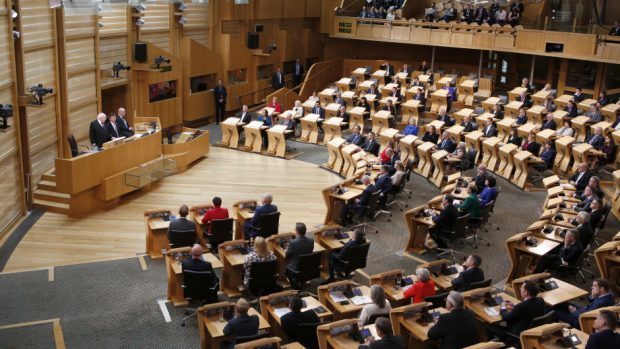Control over VAT should be devolved to Holyrood after the UK leaves the European Union (EU) a think-tank has suggested.
A portion of VAT revenues was assigned to the Scottish Parliament as part of the package of powers in the new Scotland Act, but EU law does not allow a member state to vary rates within its own boundaries, preventing full control from being devolved.
Reform Scotland said the UK withdrawal from the EU provides the opportunity to significantly boost Holyrood’s revenue-raising powers.
The independent think-tank has sent a submission to the Scottish Parliament’s European and External Relations Committee inquiry into Scotland’s relationship with the EU, arguing there is now a case for VAT to be devolved in full.
Reform Scotland’s director, Geoff Mawdsley, said: “With the UK voting to leave the EU, there is no reason why the UK government cannot give a commitment to devolve VAT in full to the Scottish Parliament once we have formally left.
“With income tax being the only major tax to be devolved under the current proposed settlement, over two-thirds of all tax revenue raised by Holyrood will be from that single source.
“This over-reliance on income tax means that there is little scope to effect real reform and create a better environment for economic growth.
“The devolution of VAT would enable Holyrood to raise a sum roughly equivalent to that of income tax.
“Crucially, it would broaden the range of devolved taxes, which would present a better opportunity for tax reform and mean that the Scottish Parliament would be responsible for raising 63% of the money that it spends.
“If the UK government still accepts the argument that VAT would be a useful tax for Scotland to have, then it should devolve it to the Scottish Parliament.
“If it decides not to do so, it should explain why, because neither the UK nor Scottish governments have given any reason why they oppose its devolution in principle.”
A UK government spokesman said: “Under the Scotland Act 2016, the Scottish Government will be assigned a share of the VAT raised in Scotland and there are no plans to change that.
“The Act delivers in full the UK Government’s promises of further devolution and will make Holyrood one of the most powerful devolved parliaments in the world.
“Holyrood is gaining wide-ranging new tax powers, including control of income tax rates and thresholds.”
